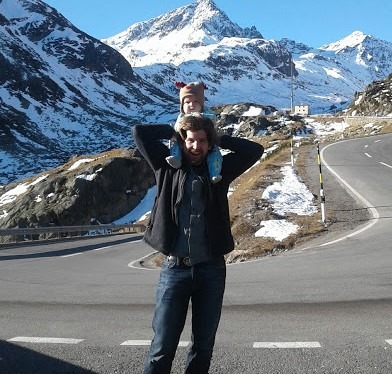
Fire Camp Germ Spread Is Dicey In Normal Times. COVID-19 Could Rip Through Crews This Season
Listen
Blaine Vandehey spends his summers rappelling from helicopters into active wildfires.
This is his 12th year in the U.S. Forest Service. And he’s worried about going to fire camp this summer with the menace of COVID-19.
Social Un-distancing
Fire camps are a hotbed of social un-distancing.
“Going to a fire camp is like a huge summer music festival,” Vandehey says.
This year, fire camp could be as dangerous as the wildfires, and top Western managers are deep in planning how to make fire camps COVID-19 ready for fire crews.
Hilary Franz is Washington’s commissioner of public lands. She says state, federal, tribal and local officials are trying to make fighting wildfires safe during a pandemic.
“How do we fight fires in the age of COVID?” she asks.
Franz says state, federal, tribal and local officials are trying to make fighting wildfires safe during a pandemic.
Crispy Underfoot
There are already signs the fire season this year could be more severe.
Bunchgrass in the Columbia Basin is crispy underfoot because it’s so dry, so early. Winter wheat in the Horse Heaven Hills south of the Tri-Cities is nearly knee high, but turning a tinge bluish from drought stress. Fuels are built up from a lighter fire season last year.
It’s really dry out in Washington. And Oregon too. Some areas of the Northwest haven’t seen a good, wetting-rain in about more than a month.

Areas of the Columbia Basin and central Washington are dry and increasingly fire prone heading into late spring and fire season. CREDIT: Washington DNR
Red flag warnings have already begun. So far, there’ve been about 200 fires in Washington and Oregon.
Protecting Crews In ‘Close Quarters’
Just getting to a fire is a problem.
“They’re on the fire line in close quarters,” Franz says. “Usually, we might have four people on an engine, but with four people on an engine you can’t operate with social distancing rules. Same with our helicopters and aircraft.”
She says engines may need to only carry two crewmembers at a time. It’s harder to distance people in the air.
The actual firefighting is directed by incident commanders. The worst fires — most complex fires sometimes threatening homes or towns — are classed as Type 1. Like the 2018 Camp fire that devastated Paradise, California. And for the entire U.S., there are only 16 Type 1 incident commanders.
“If we start having those people go down, our capability falls off very sharply, very quickly,” says Michael DeGrosky, who’s in charge of preventing and putting out fires on about 50 million acres for the Montana Department of Natural Resources and Conservation.
He says top wildfire commanders tend to be older, and he anticipates:
“You’ll see a lot more closed camps, where visitors just won’t be allowed.”
‘Camp Crud’ Is Everywhere
At the end of their shift, firefighters go back to camp. Blaine Vandehey listens for the drone of generators to lead him to the center of camp and to the food.

Firefighter Blaine Vandehey, on the northern border of Italy, with his young son. Courtesy of Blaine Vandehey
“You can usually get a good feel, cause there’s usually the hum of generators, like massive generators.”
Vandehey says after a firefighter gets to camp, it’s easy to spot the people in their first year. They wear their work gloves clipped on their belts and their dirty yellow shirts to chow. And they touch stuff.
“They have these stainless steel stairs that lead up to a window where you pick up your food,” Vandehey says. “And everyone knows, you don’t touch the railing on the way up.”
Vandehey remembers when he was new, and an old-salt firefighter told him in a gravely, gruff voice: “Vandehey, hands off the rail.”
Firefighters call what’s on the railings, tabletops and shower floors ‘camp crud’ — anything from raging athletes’ foot to a bad case of the flu. Crews are crammed together. They share picnic tables, outhouses and showers. Vandehey says some wildland firefighters just stop bathing.
Camp crud spreads — pardon the pun — like wildfire. It even contaminates the little white plastic screw caps on cubees, those communal five-gallon water jugs.
“Everyone drinks out of them,” Vandehey says. “So, if one person touches the inside of that container when they open it, or the inside of that cap, they’ve in essence, inoculated five gallons with whatever the bug is that’s going around.”
This year’s camp crud could be COVID-19.
Stopping it is essential. And natural resource managers don’t want fire camps to become clusters of the infection that’s already swept around the world in a few months.
Related Stories:

Federal firings hit Washington’s park rangers
Kyle Warden holds a crosscut saw attached to an American flag. He was a former lead wilderness ranger and was terminated on Sunday. He went to a protest at Memorial

Trash piling up, wildfires too big to fight: What wild lands might look like without workers
Mountain peaks are reflected in the waters of Lake Colchuk, located in the Alpine Lakes Wilderness Area. Smoke from a nearby wildfire hangs in the air. (Credit: Theresa Rivers) Listen

Final cohort of Idaho firefighters homebound after two weeks in California
Idaho Task Force Four poses for a photo near the ocean at the end of their two-week service in Los Angeles, California. (Courtesy: Billy Monahan) Listen (Runtime 1:03) Read The















